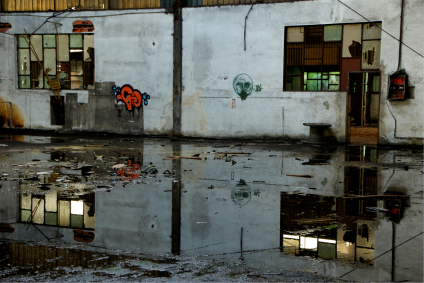In a perfect world, factory equipment damaged by flooding would find its way to the landfill, unfit for use after spending time (sometimes even days) underwater. However commercial consumers, especially small business owners should, be on the look out for flood damaged goods be sold at rock bottom prices. There are a few signs to help you vet your next equipment purchase:
Water Lines
Evidence of flood damage may still remain, even if retailers have done a good job of cleaning the equipment up. Just lift off the panels on the equipment. White, gray, brown, or black lines are indicators of water within the machine. They are water lines, and the deposits are silt, salt or debris from the flood water. These lines can show consumers just how much of the equipment was
underwater during a flood. If the lines are above the wiring and electrical components, those components are probably damaged.
Overlooked Corrosion
The panels, handles, buttons, shielding, and other exterior components of a machine may be squeaky clean, even repainted. However, most flood damaged equipment still has components that continue to corrode as the machine sits for sale. Look for rusted screws, buttons that get stuck, switches that are hard to push, or have a delayed connection to the mechanism it’s supposed to activate. Corrosion around the buttons and switches causes friction and resistance that can be overlooked by an unscrupulous seller.
Fragile Wiring
Another telltale sign is the wiring. After the water drains, especially water that contains salt and other contaminants (as it does during hurricanes), the wires will show latent signs of damage. The wires become brittle, hard and very fragile. They will not conduct electricity like normal. Expect lights and sounds to trigger at random, if at all. The electrical components of flood
damaged equipment are not reliable. A simple test run often reveals anomalies quickly.
Mold
You can often smell flood water’s muddy, stagnant odor. If you can’t, then a smell of mold around the machine is a dead giveaway. Spots inside the equipment, on the underside, and even on the exterior are mold giveaways. The moisture left within the machine is a breeding ground for mold.
By looking closely at the machinery, opening it and even sniffing the air around it, you can find out if the used equipment is water-damaged. Don’t be afraid to have the equipment inspected by a professional that you trust, before you decide to make a purchase. In
addition, the look of new wiring, buttons, swtiches and panels should not deter you from looking closely at used equipment. This is especially important for people living in or next to states often affected by flooding.


